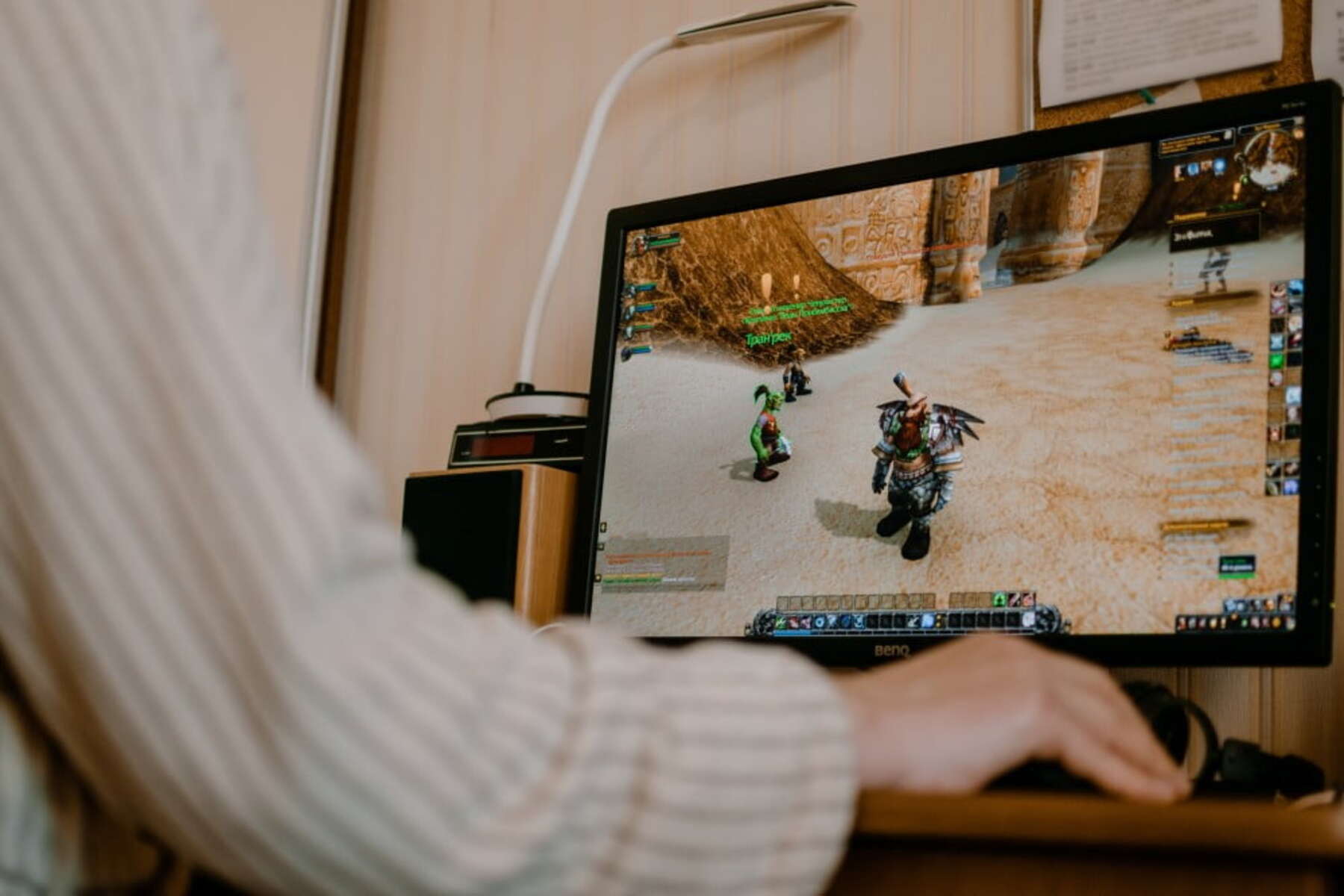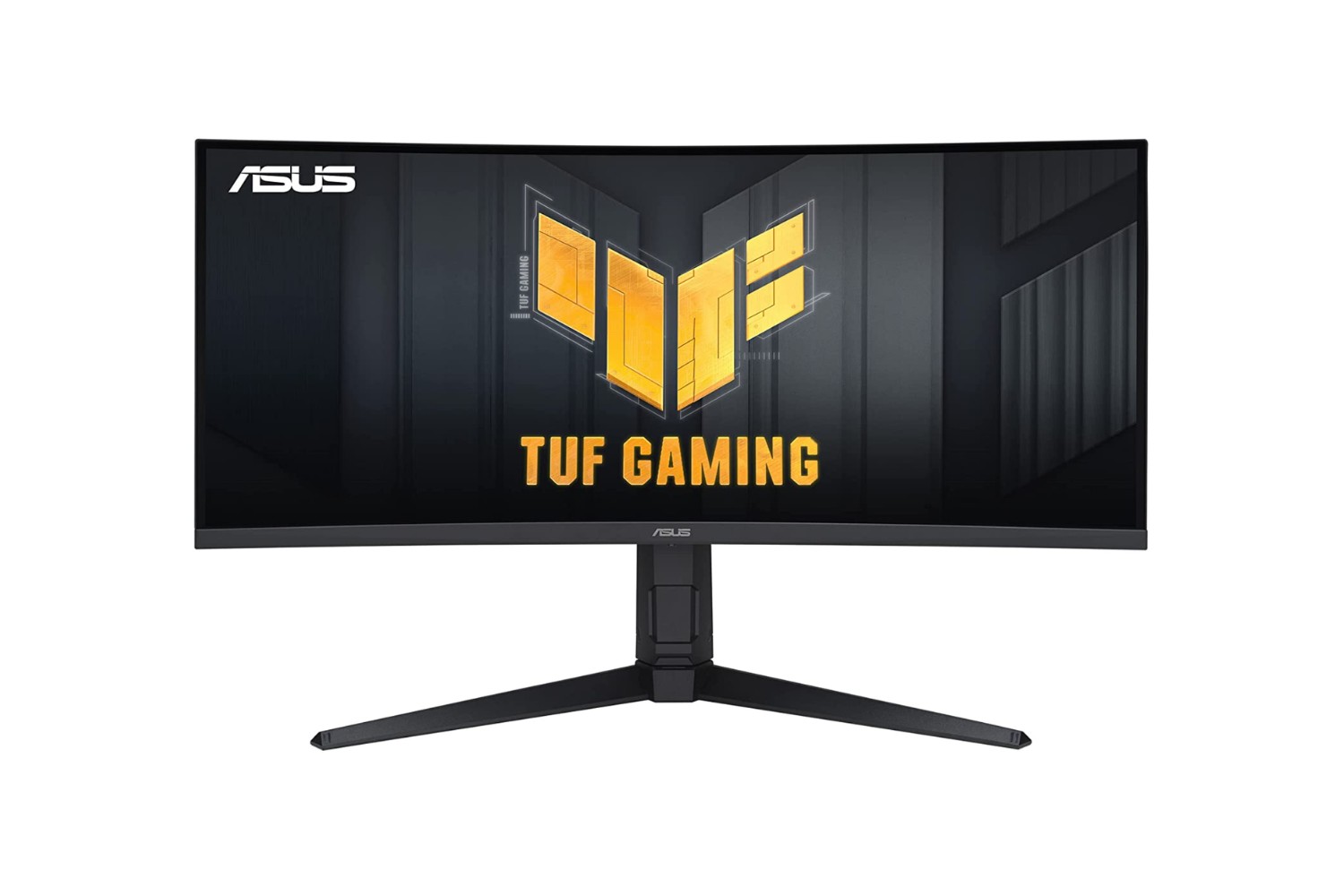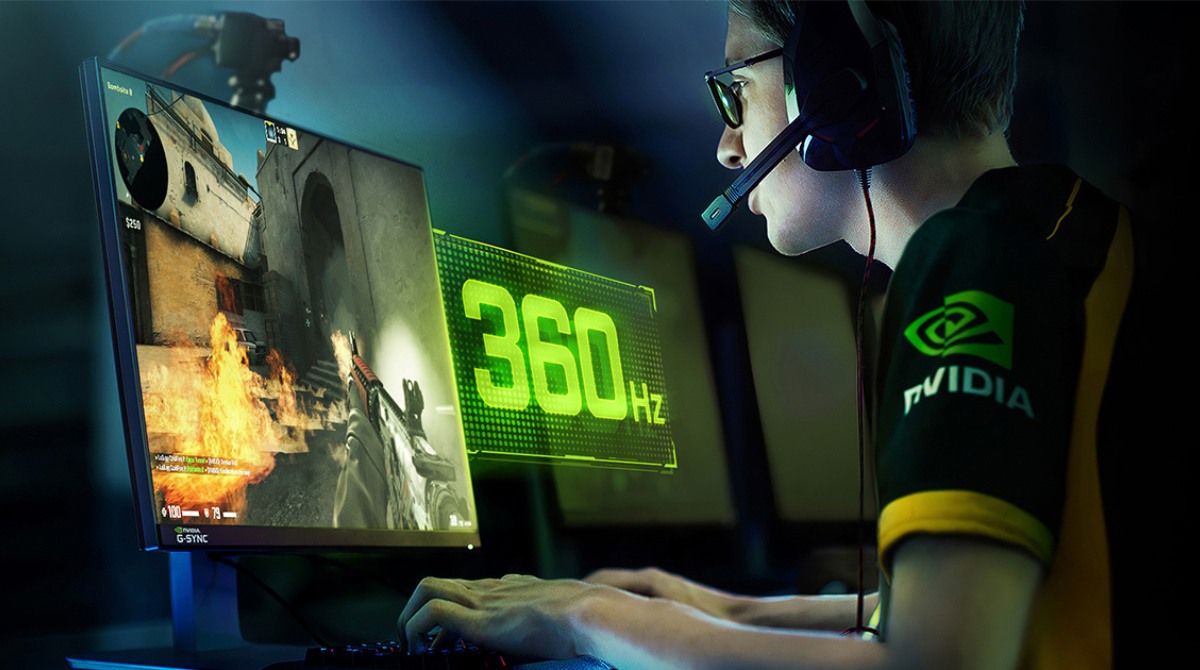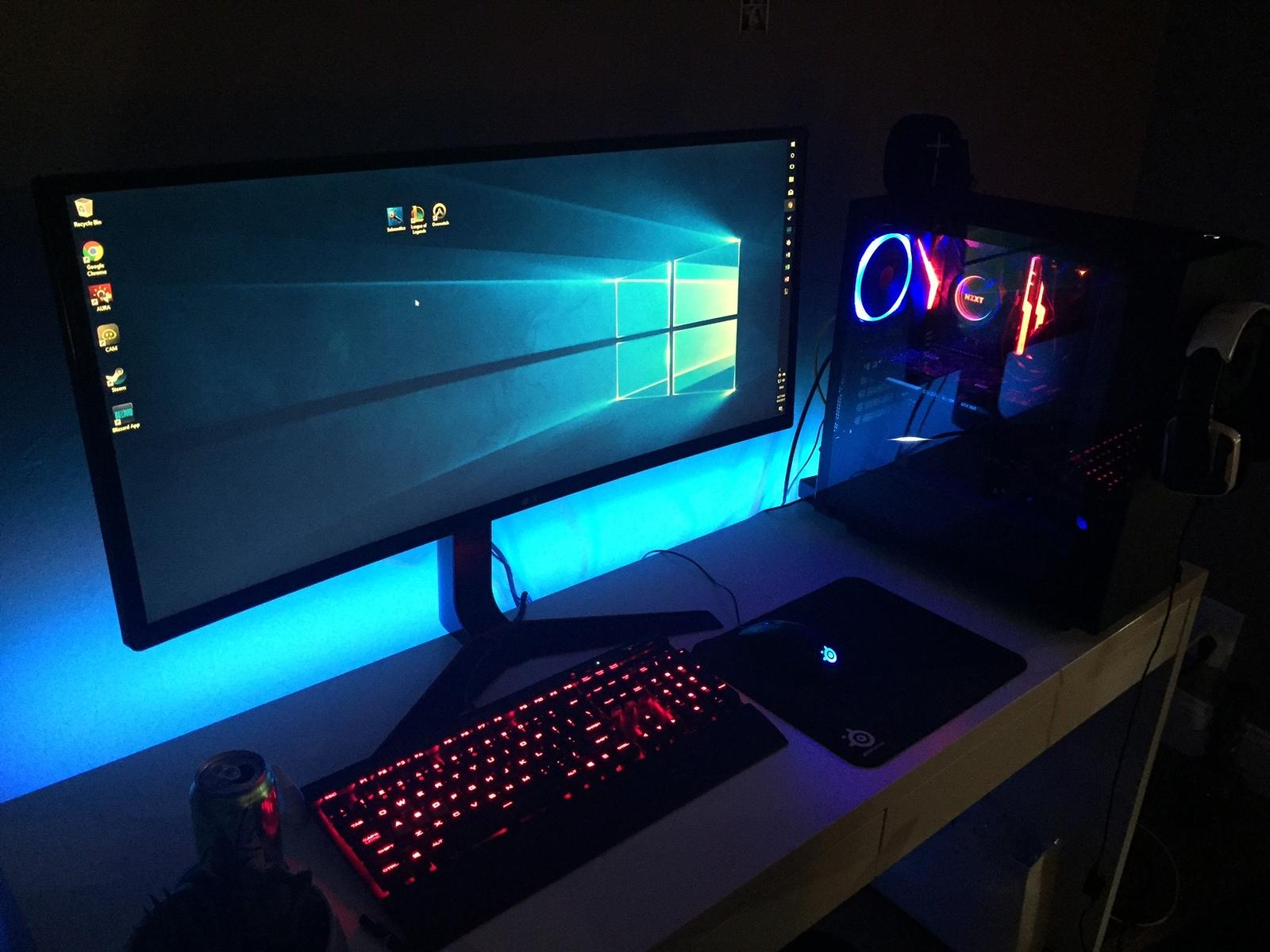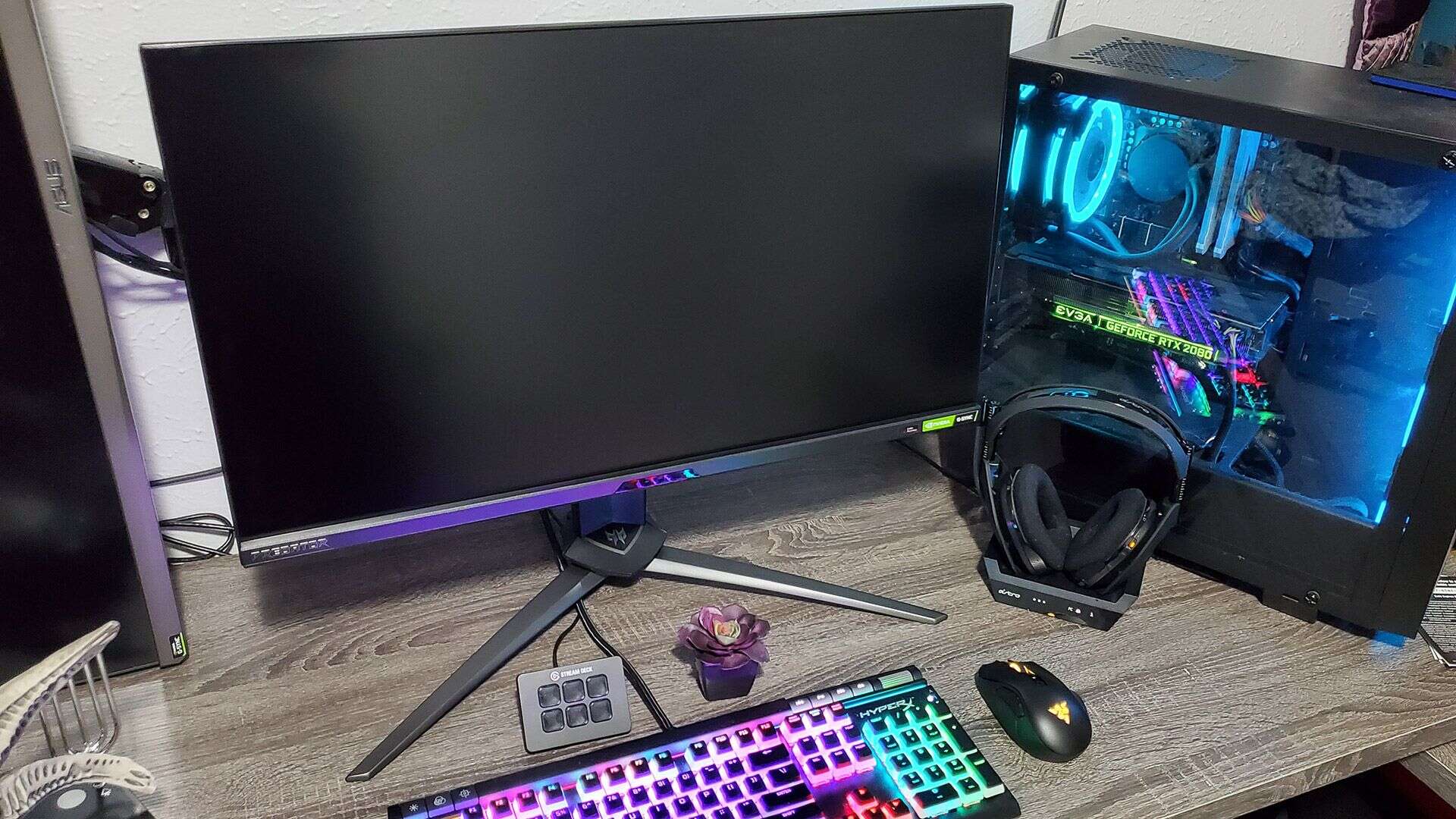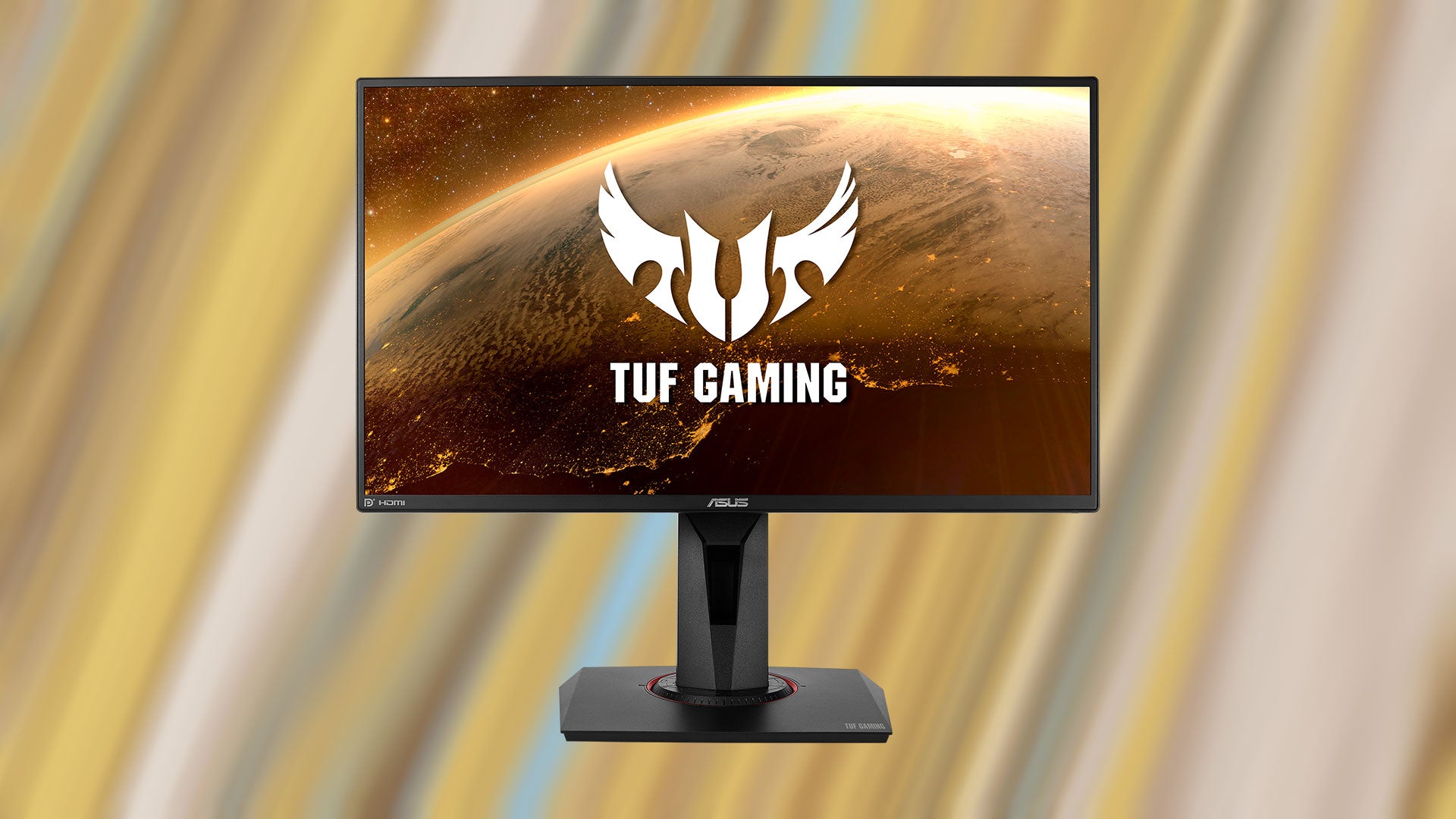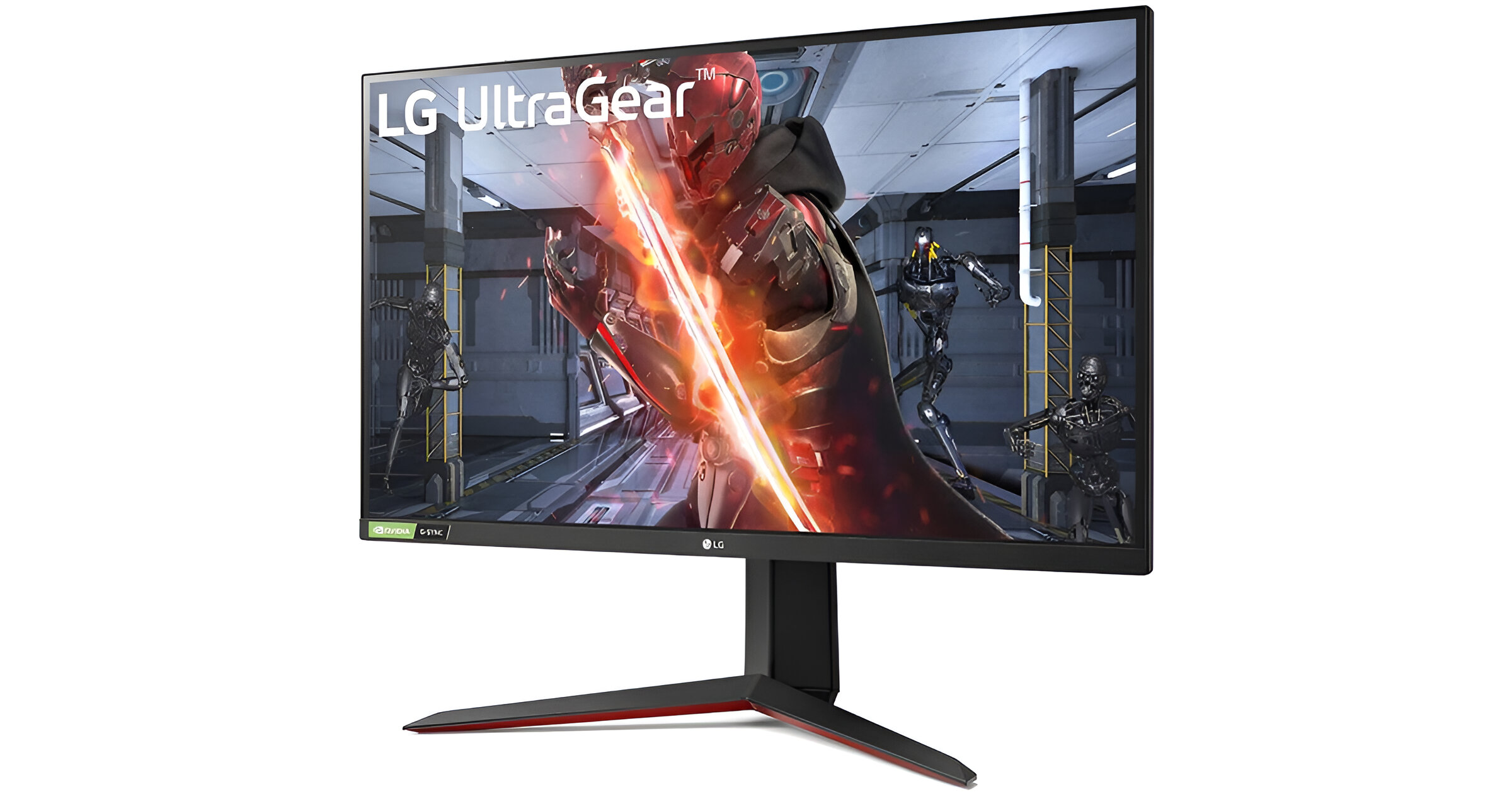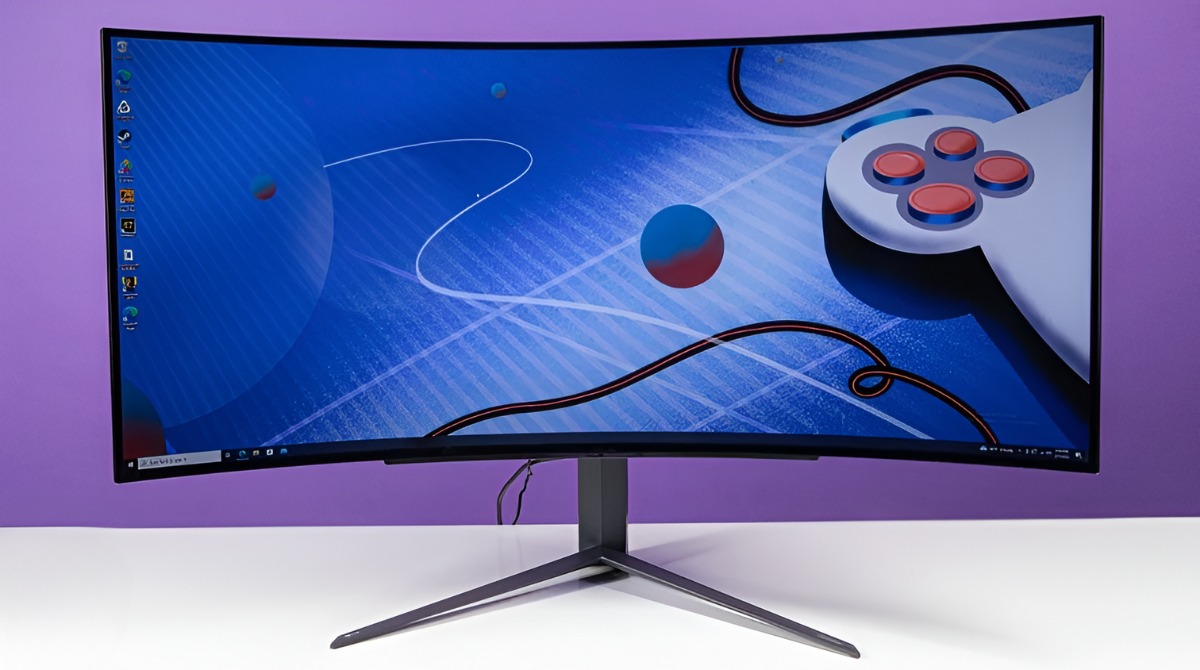Introduction
Welcome to the world of gaming monitors! If you’ve ever shopped for a gaming monitor, you may have come across terms like “1ms response time” and “2ms response time.” These numbers refer to the speed at which pixels can change color, and they can make a significant difference in your gaming experience.
When it comes to gaming, every millisecond counts. A fast response time ensures that the images on your screen change quickly and smoothly, minimizing motion blur and ghosting. But with the market flooded with various monitors boasting different response times, it can be challenging to determine which one is the best for your gaming needs.
In this article, we’ll explore the difference between 1ms and 2ms response time and help you understand which one might be more suitable for your gaming preferences. We’ll also discuss the factors you should consider when choosing a gaming monitor and weigh the pros and cons of each response time. By the end, you’ll have a clearer understanding of response times and be equipped to make an informed decision.
Response Time Explained
Response time refers to the time it takes for a pixel on a monitor to change colors. It is usually measured in milliseconds (ms) and is an important specification to consider when selecting a gaming monitor. Faster response times result in smoother graphics and reduced motion blur, enhancing the overall gaming experience.
Response time is primarily determined by the liquid crystal display (LCD) technology used in the monitor. Traditional LCD panels have a slower response time, usually ranging from 5ms to 8ms. However, with advancements in technology, gaming monitors now offer much faster response times, typically between 1ms and 4ms.
When a pixel transitions from one color to another, it takes time for it to reach its target color. During this transition, ghosting and motion blur can occur, negatively impacting the visual clarity. A lower response time means that the pixel can change colors more quickly, reducing these issues and delivering a more fluid and responsive gaming experience.
It is important to note that response time and refresh rate are two different specifications. While response time measures the speed at which individual pixels change colors, refresh rate measures how many times per second the monitor can display a new image. A higher refresh rate, such as 144Hz or 240Hz, can further enhance the gaming experience by providing smoother visuals.
Now that we have a basic understanding of response time, let’s explore the differences between 1ms and 2ms response time and how they impact gaming performance.
What Is 1ms and 2ms Response Time?
1ms and 2ms response time are two common specifications found in gaming monitors. They represent the time it takes for a pixel to transition from one color to another. A lower response time indicates a faster pixel transition and is generally preferred for gaming purposes.
A 1ms (millisecond) response time means that it takes one millisecond for a pixel to change colors. This is considered extremely fast and is often advertised as “blur-free” or “motion-smoothing.” Monitors with 1ms response time excel in displaying fast-moving images with minimal ghosting and motion blur. They are ideal for competitive gaming, where every split-second matters and smooth visuals are crucial.
On the other hand, a 2ms response time indicates that it takes two milliseconds for a pixel to transition between colors. While slightly slower than 1ms, a 2ms response time still offers excellent performance and is well-suited for most gaming scenarios. The difference between 1ms and 2ms may not be noticeable to the average gamer, especially for casual gaming or genres that don’t involve highly intense and fast-paced action.
It’s worth mentioning that the specified response time is the monitor’s average or typical value. The actual response time can vary depending on the monitor’s settings, panel type, and the colors being displayed. Different shades and transitions may yield slightly different response times.
While 1ms is often touted as the gold standard for gaming monitors, it’s essential to understand that other factors can also impact the overall gaming experience. Investing in a monitor with a higher refresh rate, such as 144Hz or 240Hz, can further enhance smoothness and reduce motion blur, even if the response time is slightly higher than 1ms or 2ms.
In the next section, we’ll discuss if response time truly matters in gaming and what other factors you should consider when choosing a gaming monitor.
Does Response Time Really Matter in Gaming?
Yes, response time does matter in gaming, but the extent to which it affects your gaming experience can vary depending on several factors. While a faster response time can significantly reduce motion blur and ghosting, it might not be the only aspect that determines your overall gaming performance.
In fast-paced competitive games such as first-person shooters or racing games, a low response time becomes increasingly crucial. Every millisecond counts when you need to react quickly to the movements on the screen. A monitor with a 1ms or 2ms response time can provide a more smooth and responsive experience, giving you a competitive advantage.
However, for casual gamers or those who play slower-paced games such as strategy or role-playing games, the difference between 1ms and 2ms response time might not be as noticeable or impactful. While a faster response time is still desirable for optimal visual quality, it may not drastically affect your overall gaming experience.
It’s also important to consider other factors when selecting a gaming monitor. The refresh rate, resolution, panel type, and input lag are all elements that contribute to the overall gaming performance. A higher refresh rate, for example, can provide smoother motion and further reduce motion blur, even if the response time is slightly higher.
Ultimately, the significance of response time will depend on your gaming preferences and the genre of games you play. If you’re a competitive gamer and prioritize fast and responsive visuals, investing in a monitor with a 1ms response time might be worth considering. However, if you’re a casual gamer or play games that do not rely heavily on quick reactions, a monitor with a 2ms response time would still offer a great gaming experience.
In the next section, we’ll dive into the various factors you should consider when choosing a gaming monitor, beyond just response time.
Factors to Consider When Choosing a Gaming Monitor
When selecting a gaming monitor, response time is just one of the many factors to take into account. To optimize your gaming experience, consider the following factors:
1. Resolution: The resolution determines the clarity and level of detail in the visuals. Common resolutions for gaming monitors include Full HD (1920×1080), Quad HD (2560×1440), and 4K Ultra HD (3840×2160). Higher resolutions offer more immersive visuals but may require a more powerful graphics card to maintain smooth gameplay.
2. Refresh Rate: The refresh rate is the number of times the display can refresh the image per second. Higher refresh rates, such as 144Hz or 240Hz, result in smoother and more fluid motion on the screen. This is particularly important for fast-paced gaming and reduces motion blur.
3. Panel Type: Different panel types, such as Twisted Nematic (TN), In-Plane Switching (IPS), and Vertical Alignment (VA), offer different characteristics in terms of color accuracy, viewing angles, and response times. IPS panels generally provide better color reproduction and wider viewing angles, while TN panels offer faster response times for competitive gaming.
4. Input Lag: Input lag refers to the delay between your input (keyboard, mouse) and the action appearing on the screen. Low input lag ensures that your commands are executed in real-time, enhancing your gaming responsiveness.
5. Connectivity Options: Consider the availability of ports such as HDMI, DisplayPort, and USB. This allows you to connect your gaming console, PC, and other devices effectively.
6. Adaptive Sync: Technologies like Nvidia G-Sync and AMD FreeSync help to synchronize the refresh rate of the monitor with the output of the graphics card. This reduces screen tearing and provides a smoother gaming experience.
7. Size and Aspect Ratio: The size of the monitor and aspect ratio can influence how immersive and comfortable your gaming experience is. Choose a screen size that suits your desk space and select an aspect ratio (16:9 or 21:9) that aligns with your preferences.
8. Price: Finally, your budget plays a role in the decision-making process. It’s important to strike a balance between the features and performance you desire and the price you are willing to pay.
By considering these factors alongside response time, you can choose a gaming monitor that meets your specific needs and preferences. In the next section, we’ll compare the pros and cons of 1ms and 2ms response time to help you make an informed decision.
Comparing 1ms and 2ms Gaming Monitors
When comparing 1ms and 2ms gaming monitors, it’s essential to understand the trade-offs and advantages of each response time. While 1ms is generally considered optimal for competitive gaming, 2ms response time still offers excellent performance for most gaming scenarios.
Here is a breakdown of the pros and cons of 1ms and 2ms response time:
1ms Response Time:
– Pros:
– Extremely fast pixel transition, minimizing motion blur and ghosting.
– Ideal for competitive gaming, providing a smooth and responsive gaming experience.
– Suitable for fast-paced games with quick movements, such as first-person shooters and racing games.
– Cons:
– Monitors with 1ms response time may be more expensive compared to those with 2ms response time.
– The difference between 1ms and 2ms may not be noticeable to the average gamer or in slower-paced games.
2ms Response Time:
– Pros:
– Offers excellent performance for most gaming scenarios and genres.
– The difference in response time may not be noticeable, especially for casual gamers or less intense games.
– 2ms response time monitors are often more affordable compared to 1ms response time monitors.
– Cons:
– In competitive gaming, where every millisecond counts, the slightly higher response time may result in a minor disadvantage.
– May exhibit slightly more motion blur or ghosting compared to monitors with 1ms response time.
It’s important to remember that response time is just one aspect to consider among various factors when choosing a gaming monitor. Other factors, such as resolution, refresh rate, panel type, and input lag, also contribute to the overall gaming experience. Consider your gaming preferences, the genres of games you play, and your budget to determine which response time best suits your needs.
Next, we’ll provide the final verdict on which response time is better for gaming based on the factors discussed throughout this article.
Pros and Cons of 1ms and 2ms Response Time
When evaluating the pros and cons of 1ms and 2ms response time in gaming monitors, it’s important to consider the specific requirements of your gaming experience. Here are the pros and cons of each response time:
1ms Response Time:
– Pros:
– Extremely fast pixel transition, resulting in minimal motion blur and ghosting.
– Ideal for competitive gaming, offering a smooth and highly responsive gaming experience.
– Particularly beneficial for fast-paced games that require quick movements and reactions.
– Provides a competitive advantage in scenarios where split-second decisions can make a difference.
– Cons:
– Monitors with a 1ms response time are often more expensive compared to those with a 2ms response time.
– The difference in performance compared to a 2ms response time may not be noticeable to the average gamer, especially in slower-paced games.
– Additional factors, such as refresh rate and input lag, may also impact the overall gaming experience.
2ms Response Time:
– Pros:
– Offers excellent performance for most gaming scenarios and genres.
– Suitable for casual gamers or gameplay that doesn’t involve highly intense, fast-action sequences.
– The monitors with a 2ms response time are often more affordable compared to those with a 1ms response time.
– Cons:
– In competitive gaming, the slightly higher response time may result in a minor disadvantage, as it may allow for slightly more motion blur or ghosting.
– Gamers who prioritize the utmost responsiveness and precision may prefer the faster 1ms response time.
Ultimately, the choice between 1ms and 2ms response time depends on your gaming preferences, the types of games you play, and your budget. Competitive gamers who prioritize split-second reactions may opt for a monitor with a 1ms response time, whereas casual gamers who enjoy a variety of games may find that a monitor with a 2ms response time provides a satisfactory gaming experience.
As response time is just one factor among many to consider, it’s important to weigh it against other specifications such as resolution, refresh rate, panel type, and input lag to make an informed decision.
Finally, let’s conclude this article by giving the final verdict on which response time is better for gaming.
The Verdict: Which Response Time Is Better for Gaming?
When it comes to choosing between 1ms and 2ms response time for gaming, there is no definitive answer on which one is better. It ultimately depends on your specific gaming preferences, the genre of games you play, and your budget.
If you are a competitive gamer who prioritizes split-second reactions and highly responsive visuals, a monitor with a 1ms response time would be the ideal choice. The faster pixel transition minimizes motion blur and ghosting, giving you a competitive edge in fast-paced games where quick movements and precision matter. However, keep in mind that monitors with 1ms response time can be more expensive.
On the other hand, if you are a casual gamer or engage in slower-paced games that don’t rely heavily on quick reactions, a monitor with a 2ms response time would offer an excellent gaming experience. The difference between 1ms and 2ms may not be noticeable to the average gamer, and the slightly higher response time won’t significantly impact gameplay. Additionally, monitors with 2ms response time tend to be more affordable.
Remember that response time is just one factor among many to consider when choosing a gaming monitor. Other specifications, such as resolution, refresh rate, panel type, input lag, and budget, should also be taken into account. Each of these factors contributes to the overall gaming experience and can have varying degrees of importance depending on your preferences.
Ultimately, the best response time for gaming is the one that aligns with your gaming needs and expectations. Consider the types of games you play, the level of competitiveness you seek, and your budget constraints. By finding the right balance between performance, price, and personal preference, you can select a gaming monitor that provides an immersive, smooth, and enjoyable gaming experience.
Conclusion
Choosing the right response time for a gaming monitor is an important decision that can greatly impact your gaming experience. While 1ms response time is often considered the gold standard for competitive gaming, 2ms response time still offers excellent performance for most gaming scenarios.
When deciding between 1ms and 2ms response time, consider factors such as the types of games you play, your level of competitiveness, and your budget. If you’re a serious competitive gamer who demands the utmost responsiveness, a monitor with a 1ms response time may be worth the investment. However, if you’re a casual gamer or engage in slower-paced games, a monitor with a 2ms response time will still provide a satisfying gaming experience at a more affordable price point.
Remember that response time is just one factor among many when selecting a gaming monitor. Factors such as resolution, refresh rate, panel type, input lag, and connectivity options also play significant roles in determining the overall gaming performance. Consider your specific preferences and requirements to find the perfect balance of specifications that suits your needs.
Whether you opt for a 1ms or 2ms response time, ensure that your choice complements the other features of your monitor and aligns with your gaming preferences. By making an informed decision and taking all factors into account, you can enjoy an immersive and visually stunning gaming experience that allows you to fully immerse yourself in the world of gaming.







